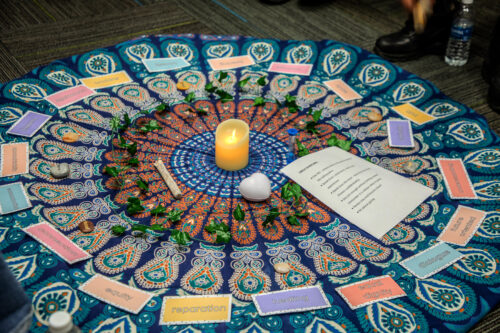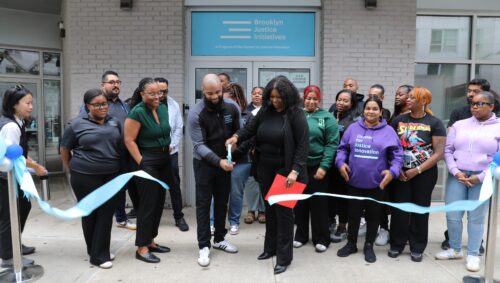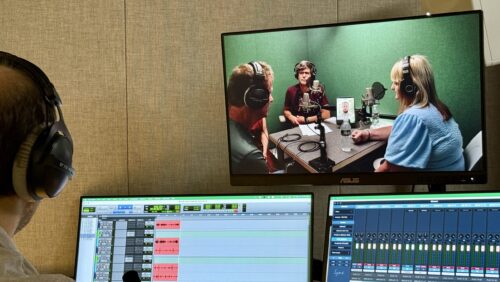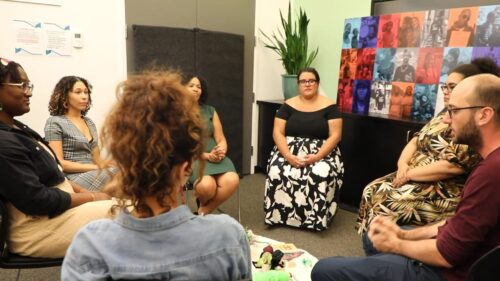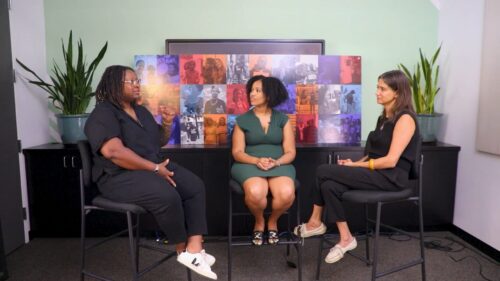Law School Courses in Problem-Solving Justice and Related Topics
As problem-solving innovation becomes more integrated into the way courts do business, law schools are beginning to offer courses examining problem-solving principles and practices. The Conference of Chief Justices and the Conference of State Court Administrators, among others, have urged law schools to include the principles and methods of problem-solving courts in their curricula. In a parallel development, Harvard Law School recently reformed its first-year curriculum to include a new course, “Problems and Theories,” that will focus on teaching students basic problem-solving skills. A recent article in the Washington University Journal of Law and Policy entitled "Lawyering and Learning in Problem-Solving Courts" makes the case for greater engagement between law school clinics and problem-solving courts.
Given the recent interest in problem solving and academia, this article seeks to provide a short overview of current law school classes that touch on topics of problem-solving justice. Courses and clinics are organized into five basic categories: problem-solving courts, community prosecution, restorative justice, problem-solving lawyering, and therapeutic jurisprudence. The list was compiled with the help of Michael Cobden, based on interviews and web searches. It is not intended to be exhaustive or definitive. Rather, it seeks to provide a snapshot of a rapidly developing field by highlighting courses from law schools around the country. Note that this overview is limited to law school classes and does not include courses on problem solving at graduate schools in other disciplines (e.g., criminology, public policy, social work).
Problem-Solving Courts
In recent years, proponents of problem-solving courts have sought to introduce drug courts, community courts, and other new approaches to justice into law schools. Often this takes the form of a single guest lecture as part of a larger course on a related topic. In addition to these ad-hoc efforts, several more law schools have recently piloted full-semester classes devoted to problem-solving justice.
Fordham University School of Law
Course: Problem Solving Justice: Courts as Agents of Social Change
Professors: Patricia Henry, Susan Knipps, Valerie Raine
Fordham has piloted a syllabus created by the Center for Court Innovation with the help of a panel of academic advisors. The course begins with a look at the conventional approach to case processing and offers a history of problem-solving courts, focusing on drug courts, community courts, mental health courts, and domestic violence courts. Guest speakers and site visits are a part of the course.
Brooklyn Law School
Course: Problem-Solving Justice
Professor: Anne J. Swern
This course, taught by an adjunct lecturer from the Brooklyn D.A.’s office, covers the history of the problem-solving court movement and addresses the role these new courts play within the larger justice system. Concerns about how courts should treat issues like drug addiction are introduced and discussed. Visits to both traditional and innovative courts are part of the course.
State University of New York: Buffalo
Course: A Critical Look at Therapeutic Courts: Drug Treatment, Domestic Violence, Mental Health and Gambling Courts
Professors: Mark Violante, Mark Farrell
This course is taught by two judges and involves extensive site visits. During visits to court, students attend case conferences and “shadow” court staff including district attorneys, defense attorneys, and judges. Students are required to write a 20-page paper about any aspect of a problem-solving court they have learned about during the semester.
Columbia University
Program Title: Center on Crime, Community and Law
Course: Pro-seminar on Problem-solving Courts
Professors: Jeffrey Fagan, Michael Dorf
This Columbia pro-seminar changes subject each year. The 2003 pro-seminar focused on community justice centers and community prosecution. The course began with readings on the theoretical basis for the courts before moving on to empirical research. This pro-seminar culminated in a research paper which was defended by each student author in a final symposium.
William and Mary School of Law
Course: Problem-Solving Courts
Professor: Gregory Baker
According to Professor Gregory Baker, there are plans to create a new course which would supplement the developing Therapeutic Jurisprudence Program (see below).
Community Prosecution
Community prosecution—a new approach to law enforcement that emphasizes neighborhood knowledge and creative, non-prosecutorial approaches to public safety problems—is being taught in a couple of law school clinics.
Brooklyn Law School
Course: Prosecutors Clinic
Professor: Lisa Smith and Anne J. Swern
In the Brooklyn program, third-year students work alongside community prosecutors from the Kings County D.A.’s office in a clinical setting. Students are encouraged to become familiar with the community itself as they learn about specific neighborhood problems.
University of Maryland School of Law
Course: Community Justice Clinic, Community Law in Action Clinic
Professor: Brenda Bratton Blom, Terry Hickey
The Community Justice Clinic has five components in which students may participate: community prosecution, community justice council, school conflict resolution, youth advocacy/law/leadership and business development. The community prosecution component allows students to design, operate and evaluate a community prosecution project with help from faculty and the Baltimore City State’s Attorney's Office. The community justice council is a group which consists of community leaders, law enforcement, prosecutors, defenders, law students and clergy who create and evaluate offender rehabilitation programs.
New York University School of Law
Course: Criminal and Community Defense Clinic
Professors: Kim Taylor-Thompson and Anthony Thompson
The Criminal and Community Defense Clinic offers students to explore the variety of ways that defender offices can be more grounded in the communities from which their clients come and to which they return. Students work with defenders at the Neighborhood Defenders Service of Harlem and also with community advocacy groups in addressing broader issues that affect communities of individuals charged with crime.
Restorative Justice
Several law schools have restorative justice programs or courses that focus on efforts to promote alternative approaches to disputes that bring together victims and offenders. What follows are selected examples.
University of Wisconsin Law School
Program Title: Frank J. Remington Center
Course: Restorative Justice Project
Professors: Leslie Shear, Pete DeWind
This clinical program is open to 12 second and third-year law students and is divided into two parts: Family Law Project and Restorative Justice Project. The Restorative Justice Project facilitates meetings between incarcerated felons and victims. The project seeks to teach students a non-adversarial approach to criminal justice issues.
Marquette University Law School
Course Titles: Restorative Justice; Restorative Justice Initiative Clinic
Professors: Janine Geske
The course teaches restorative justice in both American and international settings, including victim/offender and victim/family conferencing, victim impact panels and Native American Circles. The course also explores constitutional problems related to restorative justice.
Pepperdine University School of Law
Course: Restorative Justice
Professor: Daniel Van Ness
This course explores the restorative justice movement, a systematic approach to criminal justice that emphasizes repairing harm caused or revealed by criminal behavior. Restorative justice incorporates aspects of alternative dispute resolution and civil law into criminal matters in furtherance of its overarching goals of healing and reconciliation. The course considers where the movement originated, how it has developed in the past twenty years, the opportunities and challenges it confronts, and specific ways in which it can be woven into and implemented as part of the criminal process.
Georgetown Law
Course: Restorative Justice In International Human Rights: A New Paradigm
Professor: Lynn Fraser
This is an LL.M. seminar offered on international human rights and restorative justice that teaches the basics of the restorative justice theory before applying it to the international issues.
New York University School of Law
Course: Retribution in Criminal Law Theory & Practice Seminar
Professor: James Frederick Gilligan and David A.J. Richards
This course discusses the role retribution should play in criminal justice. Topics discussed will include the philosophy of retributive justice and social justice in a democracy, the psychology of violence (rooted in patriarchal emotions of humiliation and shame, suppressing the moral emotion of guilt), the historical roots of American retributivism (including mass incarceration and the death penalty), and alternatives to retributive justice (including therapeutic and restorative justice). The seminar includes in its pedagogy experiments in freeing creative voice through weekly writing and theatre exercises and includes a close study of philosophy, history, psychoanalysis, novels, and plays.
Problem-Solving Lawyering and Alternative Dispute Resolution
In October 2006, the Harvard Law School revised its first-year curriculum to include a new course, “Problem Solving Workshop,” that will engage students in working on complex, multi-faceted problems involving diverse areas of law. Other schools that offer at least a course or two which teach general problem-solving lawyer skills include Stanford, UCLA and New York Law School. California Western University has taken the idea further by creating an entire curriculum and concentration called “Creative Problem-Solving.” The curriculum has three core courses: Problem-solving & Preventive Law; Cross-cultural Problem Identification and Problem Solving Skills & Theory. Georgetown Law School has a special program on “Conflict Resolution and Legal Problem Solving” led by Carrie Minkel Meadow that focuses on mediation and other forms of alternative dispute resolution. Like Georgetown, many law schools have classes in Alternative Dispute Resolution. Indeed, the Association of American Law Schools, the principal association of law professors, has a special section devoted to Alternative Dispute Resolution.
Florida Coastal School of Law
Course: Comprehensive Law Practice
Professor: Susan Daicoff
This course is limited to 30 students and has been offered during spring semesters since 2000. The official description says that the course is evenly divided between theory and skill development. Most of the course covers mediation and general lawyer skills from the perspective of law as a healing profession. One week is devoted to problem-solving courts.
University of Baltimore School of Law
Course: Center for Families, Children and the Courts’ Student Fellows Program
Professor: Barbara A. Babb
The fellowship program has a limited enrollment of six students. The program consists of weekly two-hour seminars and weekly one-hour supervisory meetings. About eight or nine class sessions (out of sixteen) are devoted to problem-solving courts, teen courts, drug courts and family courts. Students participate in research projects for the Center.
Therapeutic Jurisprudence
Proponents of therapeutic jurisprudence, most notably Professors Bruce Winick and David Wexler, argue that therapeutic jurisprudence—the study of the therapeutic (and anti-therapeutic) impacts of legal decisions and actions—can apply to all areas of legal practice. Many of the courses listed below have posted syllabi on the website for the International Network on Therapeutic Jurisprudence maintained by the University of Arizona.
William and Mary School of Law
Course Title: Therapeutic Jurisprudence
Professor: Gregory Baker
Students spend most of their time working in either a drug court or mental health court. This work commonly involves being a “therapeutic court law clerk,” researching constitutional and other legal issues and writing legal memoranda for the judge. There is also a community service component that requires students to provide some non-legal service to either the court or to the local community.
University of Miami School of Law
Course Titles: New Directions in Lawyering: Interviewing, Counseling, & Attorney/Client Relational Skills; Therapeutic Jurisprudence Seminar; Therapeutic Courts Externship
Professors: Bruce Winick, Bernard P. Perlmutter, Jennifer Zawid
The first course focuses is on preventive lawyering, holistic representation and civil matters. Students are assigned a variety of readings including articles profiling attorneys who utilize therapeutic methods in their practice. Traditional cases are re-examined with an eye towards how they might have been handled differently from a preventive or holistic perspective. Students engage in mock interviews and role-playing exercises, some of which are based on real case files and some of which are scripted. Outside speakers from other departments in the University of Miami inform the class of other disciplines and how they might contribute to the understanding of the client’s perspective. In the final phase of this course, students conduct supervised interviews of clients who are in the custody of a juvenile detention facility and prepare memoranda which are shared with the public defender’s office.
The second course focuses on studying and attempting to reform substantive legal rules and legal procedures. Students will prepare a 30-40 page paper on a therapeutic jurisprudence topic or theme and will have the opportunity to participate in research or law reform activities conducted by the Therapeutic Jurisprudence Center.
University of Puerto Rico
Courses: Therapeutic Jurisprudence; Therapeutic Jurisprudence and New Directions in Criminal Lawyering; Interdisciplinary Collaboration in Therapeutic Jurisprudence; and Sentencing and Corrections from a Therapeutic Jurisprudence Perspective
Professor: David Wexler
Professor Wexler is a Professor of Law at the University of Puerto Rico in San Juan, Puerto Rico, a Distinguished Research Professor of Law at the James E. Rogers College of Law, Tucson, Arizona, and the Director of the International Network on Therapeutic Jurisprudence.
Touro Law Center
Course: Selected Topics in Professional Responsibility: Lawyering as a Happy, Healthy, Healing and Ethical Profession
Professor: Marjorie A. Silver
According to the course description, this course is geared toward students who are already experiencing disillusionment about their chosen profession. The course addresses the emotional and mental strain on lawyers as much as on litigants. Problem-solving courts and restorative justice are presented as areas of practice that might avoid the ethical and emotional difficulties of working in a traditional legal career.
New York Law School
Course: Therapeutic Jurisprudence
Professor: Deborah Dorfman
This course focuses on mentally disabled individuals who are litigants or are the subject of litigation. It is a predominantly on-line course, requiring students to participate in a weekly chat room, discussion board, and two, day-long weekend live seminars at New York Law School.
University of Connecticut Law School
Course: Therapeutic Jurisprudence
Professor: Robert G. Madden
This is a seminar covering a wide range of theory and skill development. One class session is titled “Specialized Courts: Applied Therapeutic Jurisprudence.” Three other sessions deal with Domestic Violence, Juvenile Justice, Drug Courts and Criminal Courts.
Mercer University School of Law
Course: Therapeutic Jurisprudence
Professor: Bonnie Cole
The course covers the psychology of law and the psychological well-being of practitioners. Other topics include comprehensive law, holistic lawyering and collaborative law.
